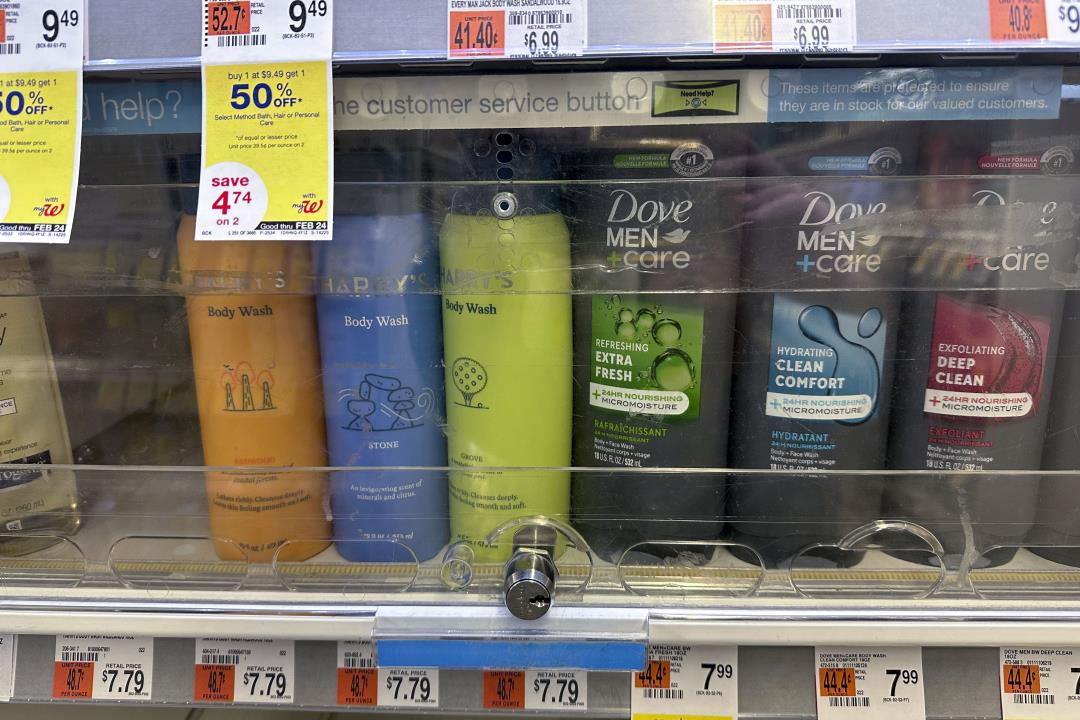Retail stores used to lock up only expensive or regulated items, like phones or cigarettes. But now everything from toothpaste to deodorant is locked away behind plexiglass cases, writes Amanda Mull at Bloomberg. In theory, a customer presses a call button to quickly summon an employee with a key. In reality, it takes forever—often so long that frustrated customers give up and leave—all for a crappy bottle of shampoo or laundry detergent. Stores like Target, CVS and Walgreens say the locked cases are a necessary response to rising thefts, but Mull is skeptical, attributing the trend to the “great shoplifting spree of 2021,” in which retailers made claims that shoplifting is killing us but provided no numbers to back up those claims.
Flash burglaries may go viral on social media, she writes, but they account for only a small fraction of shoplifting. Criminals breaking into warehouses or trucks are the bigger problem, and plastic wrappers in stores won’t solve that. Still, chains have invested a lot of money in these cases, and the strategy “seems to be backfiring,” Mull writes. Instead of causing fewer thefts, stores have stressed-out employees and angry customers who wish they had shopped online. “The modern American store is designed for self-service, which encourages customers to buy more,” Mull writes. “If you can’t just grab most of the things you want, the brick-and-mortar retail system as we know it no longer works.” (Read the full article, in which Mull tries to understand why some products are locked away and others aren’t. Spoiler alert: It’s a futile endeavor.)

